Take your business to new heights in organization and efficiency. We provide you with the key steps to plan projects with Akeneo in your ecommerce store. Everything you need to know about integrating a PIM into your business and what to expect throughout the process.
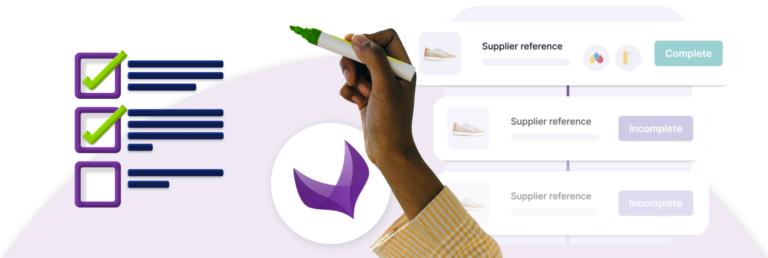
What is PIM & Akeneo
A Product Information Management solution is an enterprise system that serves as a centralized hub for collecting, storing, and managing your product information on your eCommerce platform. It’s also the primary location for creating a catalog for subsequent distribution across your sales and eCommerce channels.
A PIM tool streamlines and expedites the creation and delivery of engaging product experiences that will drive your business growth. It’s an invaluable solution for companies with extensive product catalogs, dynamic ranges, multiple sources of product data, and numerous suppliers.
Though there are many options in the market for PIM and product organization tools, Akeneo stands out by taking it a step further with its extensive set of features and connectivity.
Thanks to its Web API, Akeneo can seamlessly connect with other systems already in use in your company that provide product information, such as an ERP (Enterprise Resource Planning) or specific applications for certain clients. Not to mention the numerous features it offers, which streamline tasks related to enriching and distributing product information to your buyers. It is, without a doubt, one of the most powerful PIM solutions available today.

Why is Product Information Management so Important?
Shopping experiences vary across channels, but they all share a common denominator: the quality of product information. When consumers make online purchases, they place greater trust in brands and sellers that provide comprehensive, accurate, and original data. Conversely, they are less likely to trust products that lack such information.
Have you ever abandoned an online store due to insufficient product information or poor-quality photos? Perhaps you couldn’t find an appliance that matched your kitchen’s exact dimensions, leading you to think, “I’ll look elsewhere”. Or were you disappointed upon opening a package after weeks of anticipation, only to find a product that didn’t meet your expectations?
Inadequate or insufficient product information is one of the most common causes of shopping cart abandonment and high return rates. Here is what Google has found out during their research:

Also, the quality of your eCommerce product catalog affects two important areas of digital commerce:
- Traffic generation: It attracts users who are genuinely interested in making a purchase through valuable content and achieves better rankings by search engines.
- Product conversion: Achieving higher sales volumes through information that addresses all consumer doubts with detailed and appealing content that helps drive, excite, and encourage purchases.

Who is PIM & Akeneo Aimed at?
Any eCommerce company managing a large product database benefits from using PIM software. Not only does it reduce the number of manual processes for product and inventory management, but it also eliminates nearly all potential errors or inaccuracies when entering product data.
It goes without saying that constant task repetition can lead to errors. These errors not only affect product accuracy but also lead to misunderstandings in communication with your buyers. This results in typos in areas such as product type, size, and delivery time, to name just a few. And as we know, logistics delays are closely monitored in today’s times. All these areas begin to suffer as a result of not knowing what an eCommerce PIM software is and the overall positive impact it has on eCommerce businesses.
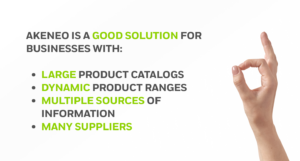
Regardless of size, seeking new and better ways to optimize communication and enhance links between departments is another essential step for the smooth operation of a company. Once a certain scale has been reached, these improvements become mandatory rather than simply something nice to implement.
If your business is already large enough, adding a PIM component becomes more than just an enhancement; it’s essential for online stores aiming to build an omnichannel and/or multi-regional business.
If you’re just starting out, benefit from streamlined processes and faster growth by implementing a PIM program for your store. Consider using an ERP system as a way to connect marketing and sales departments with all other areas responsible for product information.

Akeneo Editions
Akeneo comes in three different editions, one free and two paid : Community, Growth, and Enterprise. In that order, each edition contains the benefits of the previous one plus its own new and exciting set of characteristics and capabilities.
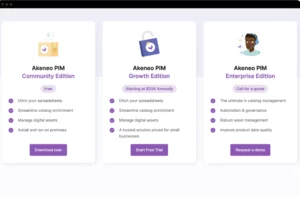
Key features of each Akeneo edition.
The features of the Community edition enable your team to:
- Gather Product Data. Collect raw product data from any source – from CSV/Excel files to an ERP – and bring them together in one place.
- Manage Catalogs. Structure and manage your master catalog in a single source for all product information.
- Enrich Product Information. Create product experiences using a variety of digital assets such as text, images, video, and documents. Benefit from easy management of product data translations by channel and/or location.
- Export Product Data. Seamlessly share the latest product information across all your channels to provide more engaging customer experiences.
- Data Quality Insights. Measure the quality and consistency of product data and receive improvement suggestions.
- Integration with Other Systems. Connect the entire ecosystem through the powerful WEB API or leverage connectors and extensions developed by the Akeneo community, readily available on the Akeneo App Store.
- Community Support. If you have questions, Akeneo has answers. Stay connected with a vibrant open-source community through Slack, Stack Overflow, or Crowdin & Badger channels.
The free edition is relatively easy to install and run on premise (we offer this service), though hosting is at customer’s expense.
The Growth edition includes the same features as the Community edition and adds:
- Identifier Generator. Automate the creation of product identifiers that align with your business requirements.
- Family Templates. Accelerate catalog modeling with predefined industry templates that include the most relevant attributes.
- Enhanced AI-powered Enrichment and Translation. Effortlessly generate and translate product content using the power of AI and custom messages derived from your own attributes in Akeneo PIM.
- Concurrent Editing. Increase collaboration by allowing multiple team members to work on the same product simultaneously, avoiding conflicts and data loss.
- Category Enrichment. Utilize images, text, and SEO content to create more impactful presentations for product lines.
- Custom Exports. Create custom exports according to the requirements of retailers or distributors.
- Custom Imports. Upload product data files of any structure and map them to the structure within Akeneo PIM.
- Automatic Updates. Source code versions are automatically available and applied in cases such as patches or major fixes.
- Early Access to Latest PIM Features. Whenever Akeneo develops new features, they are made available to users so they can explore them and see if they fit their needs.
- SLA-backed Support Assistance. Service Level Agreements (SLAs) define support standards, meaning a guarantee of customer service. This could refer to the quality, availability, or timeliness of the service provided.
In this version, Akeneo offers hosting services with an annual subscription fee.
The Enterprise edition includes the same features as the Growth edition and adds:
- Advanced Permission Management. Ensure that collaborators only access the products and values they need to improve.
- Enrichment Workflow. Guide team members through the enrichment process to optimize tasks, improve collaboration, and accelerate time to market.
- Workflow Validation. Review and approve changes to ensure high-quality product information.
- Version Control and Publishing. Restore products and descriptions to a previous version and maintain multiple versions of products.
- Rules Engine. Automatically enrich data, reducing errors and manual effort.
- Digital Asset Management. Organize, enrich, link, and transform multimedia assets for specific channels.
- Digital Asset Sharing. Easily share product multimedia files with teams and channels via a link.
- Teamwork Assistant. Help your team easily see which products and attributes they are responsible for.
- Reference Entities. Link information to core values, brand guidelines, and more to your products.
- Time to Market Information. Track the time it takes to prepare products for launch and identify opportunities to optimize product data enrichment and launch them to market faster.
- Business Analysis. Analyze how product content affects sales performance to understand how to refine enrichment strategies to increase sales.
- Single Sign-On. SAML-based login option for organizations with many users.
- Work with Akeneo Supplier Data Manager and Shared Catalogs. Enterprise add-ons that enhance collaboration with all product stakeholders, whether they are suppliers, distributors, retailers, or internal teams.
- Project Success Assistance. The Akeneo team provides assistance to achieve project success.
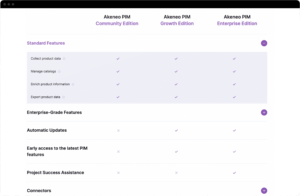
Deployment model follows SaaS/PaaS, and the price is paid in an annual subscription fee.
For more information, visit the official Akeneo page where the editions are compared and detailed at http://akeneo.com/compare-editions

Planning and Implementation of the Akeneo Integration Project
As we’ve seen in recent years, every online business has unique growth needs and operational processes, and there’s no one-size-fits-all standard procedure that applies to all merchants. Drawing from our experience in implementing PIM systems with Akeneo, we can confirm that the majority of them require the following steps.
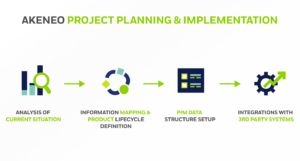
Identifying needs and opportunities
Evaluating current practices and understanding what is being done and how.
As the first step of the project, you need to identify – either on your own or with the assistance of Akeneo software consultants like us – the current product processes:
How is product information managed and enriched, and what is its scope?
What are the systems or channels involved, both inbound and outbound? It’s important to understand the starting point and each element available from the outset of the project.
Elaborating scenarios
Utilizing as much necessary information as possible, at i4, for example, we assist clients by proposing a scheme that accommodates all components related to product information.
For instance, some companies have both eCommerce and ERP software but lack a PIM. Many of them manage the catalog directly in the eCommerce platform, either manually or through spreadsheets. In such cases, we provide an ecosystem that integrates each of these three components. This approach leverages existing resources, automates tasks, reduces human errors, and amortizes the infrastructure cost.
Another common example is clients with multiple sources of product information and too many people spending excessive hours gathering all the necessary information. The goal in this case couldn’t be clearer: to have a consolidated master catalog managed from a single location.
Therefore, in this step, it’s necessary to establish the possible scenarios and points of action required.
Define the product life cycle
As the first step of implementation, the product life cycle is determined. At this point, it’s necessary to know where it comes from, who enriches it, and the scope or extent to which it reaches. Here, essential basic interactions are determined, including each of the departments involved, existing systems, supplier information, responsibilities, etc. Once this has been achieved, the product life cycle can help dictate the next steps for configuring and implementing the PIM.
The PIM data structure
In this phase, the PIM team, guided at all times by Akeneo experts, identifies and builds the elements that will shape the master catalog. Next, they prepare the groundwork to receive the information that will shape any product present at the time of analysis. The following elements are typically identified:
- Channels, such as eCommerce, printing, etc. where information lands.
- Locales, language and countries for regionalized information.
- Currencies, in line with each region.
- Categories, definition of category tree(s).
- Attributes, all the characteristics within the product universe are defined.
- Attribute options, some attributes should offer a list of possible values.
- Families, certain types of products have attributes common to their siblings.
- Family variants, within a family, there may be products that, due to the variation of one or more attributes, generate a new reference.
Catalog Consolidation in the PIM
Once the PIM structure is clearly defined and Akeneo is configured according to the client’s needs, a strategy must be defined to gather all possible product information.
In general terms, in Akeneo, we can create products in three ways:
- Mass Imports: Mass importing files is especially useful when dealing with large product lists, or when the client is familiar with using files to process information.
- Web API: Although sometimes it requires a bit more effort, using the available web API helps when processing a (very) large volume of data from the source is not feasible. In these cases, developing an ETL (Extraction, Transformation, and Load) program is necessary, which takes more time but is well worth it.
- User Interface: Creating the product directly from the user interface is the best option for very small catalogs. In this case, we would consider companies that are just starting out or that only have a few products in their inventory.
Integration with Other Systems
Through Akeneo’s powerful and comprehensive web API, virtually any integration you can imagine is possible out of the box. This means that the PIM has countless possibilities to integrate into your company’s ecosystem, regardless of the business solution.
Akeneo has been created from an API-centric perspective, making it easier to integrate your PIM with any system you are currently using or considering introducing.
From ecommerce, such as integrating Akeneo with Magento or Akeneo with Shopware, to ERP systems, printing systems, B2B portals, and much more, whatever your needs may be, you can be sure that Akeneo PIM will fit perfectly into your current ecosystem and unlock future growth thanks to its extensive network and tailor-made PIM integrations.
During the analysis phase, it’s important to identify the needs that may arise or benefit from integration with other systems in the organization, paving a clear path to facilitate these integrations in the future.
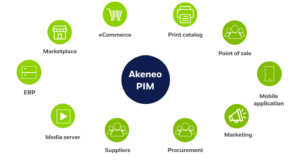
Akeneo offers a wide range of plugins that can connect with other well-known tools in the market, such as Magento. If a connection with Magento is essential for you, it’s crucial to ensure strong and consistent connectivity and conduct tests to ensure its proper functioning.
If integration with other systems has been carried out through a custom development plan, platform, or consulting firm, tests should also be conducted to ensure the integration functions correctly and that the results meet expectations.
For more information on implementing Akeneo in your business, or to learn more about the perfect PIM setup for your organization, please contact us through the following form. We’ll be happy to set you on the path to growth through a well-orchestrated PIM implementation.
Author
Enrique Martinez has been in charge of implementing Akeneo PIM and providing support to interactiv4 clients for 7 years. He is a systems engineer specialized in software development with over two decades of experience. His all-around profile enables him to develop complex solutions from scratch to reverse engineering..

















